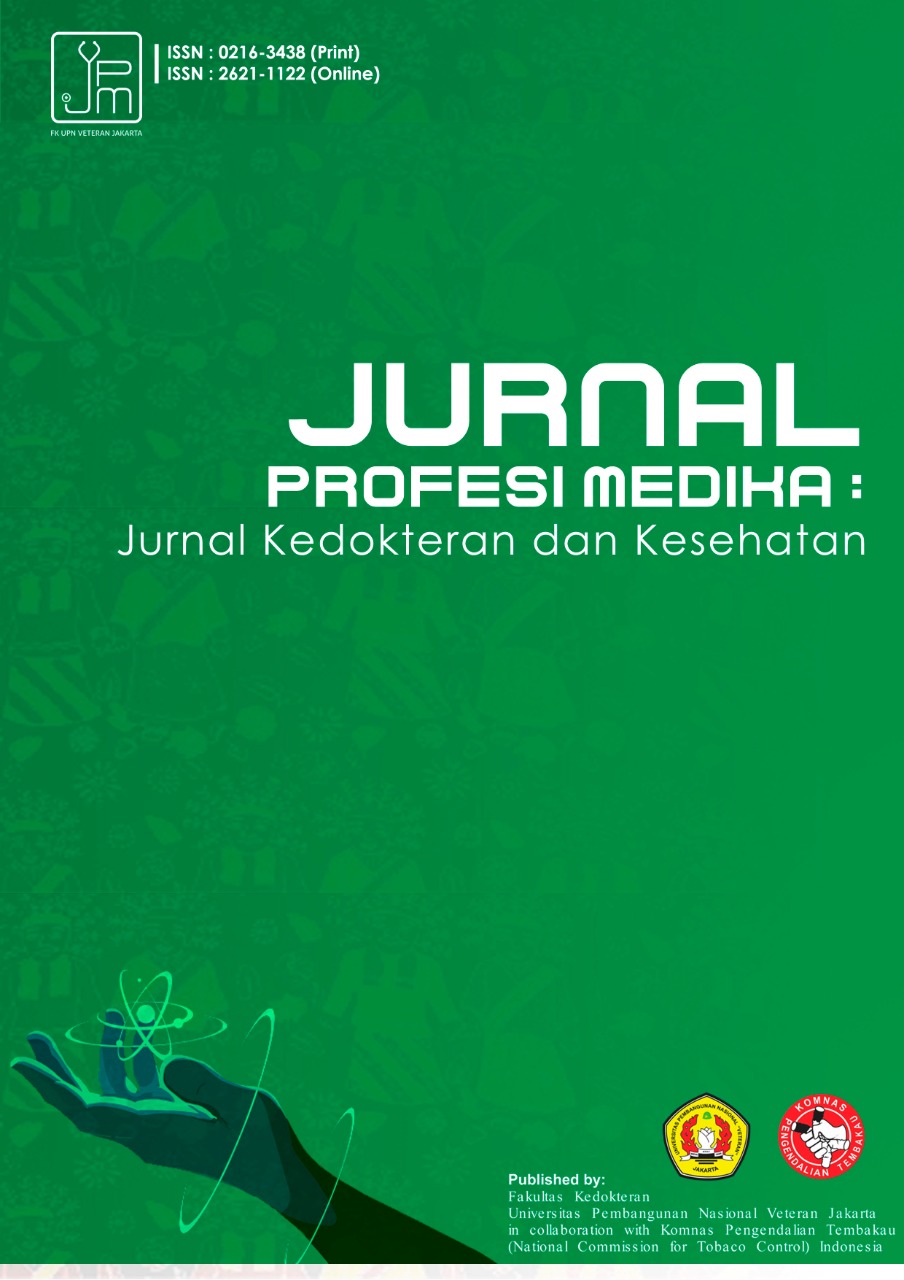Ampicillin-Gentamycin Were Equivalent to Cefotaxime-Gentamycin Therapy Outcome on Neonatal Sepsis in Rural Area of West Borneo
DOI:
https://doi.org/10.33533/jpm.v16i1.4429Keywords:
ampicillin, antibiotic, cefotaxime, neonatal sepsisAbstract
The limited facilities in rural areas, such as Ketapang, make it hard for clinicians in charge to provide the most effective treatment while also considering preventing irrational antibiotic usage at once for neonatal sepsis. This study aimed to compare the length of stay of neonatal sepsis patients given Ampicillin-Gentamycin and Cefotaxime-Gentamycin as empiric antibiotic therapy. This was a retrospective observational study of patients admitted to Fatima Hospital, Ketapang, West Borneo, from June 2020-June, to 2021, with neonatal sepsis diagnosis based on the clinical presentation and routine blood lab. Slovin formula was used to determine the minimum sample size. Data were analyzed using Mann-Whitney Test. From 105 samples collected, the most common symptoms of neonatal sepsis found were fever (32.4%), vomitus (29.5%), and breathing difficulty (26.7%). Routine blood lab mostly showed leukocytosis with a mean of 28.369, and the mean length of hospitalization in patients given the Ampicillin-Gentamycin combination was 6.35 days. In comparison, the Cefotaxime-Gentamycin combination was 4.68 days. There was an insignificant difference in hospitalization between the two groups (p=0.274). Therefore, administration of Ampicillin-Gentamycin as empiric therapy in neonatal sepsis showed a good outcome as with Cefotaxime-Gentamycin therapy.
References
Reinhart K, Daniels R, Kissoon N, Machado FR, Schachter RD, Finfer S. Recognizing Sepsis as a Global Health Priority — A WHO Resolution. New England Journal of Medicine. 2017;377(5):414–7.
Asli A, Lusyati S, Sauer PJ, Kesehatan Anak I, Sakit Anak dan Bunda Harapan Kita R. Sepsis Neonatal di NICU RSAB Harapan Kita Jakarta. Sari Pediatri. 2007;9(3):173-177
Wynn JL. Defining neonatal sepsis. Current Opinion in Pediatrics. 2016;28(2):135–140.
Bizzarro MJ, Dembry LM, Baltimore RS, Gallagher PG. Changing Patterns in Neonatal Escherichia coli Sepsis and Ampicillin Resistance in the Era of Intrapartum Antibiotic Prophylaxis. Pediatrics. 2008;121(4):689–96.
WHO. Pocket book of hospital care for children : guidelines for the management of common illnesses with limited resources. World Health Organization; 2012. p 55
Wynn JL, Wong HR, Shanley TP, Bizzarro MJ, Saiman L, Polin RA. Time for a Neonatal-Specific Consensus Definition for Sepsis. Pediatric Critical Care Medicine. 2014;15(6):523–528.
Manan MM, Ibrahim NA, Aziz NAbd, Zulkifly HH, Al-Worafi YMA, Long CM. Empirical use of antibiotic therapy in the prevention of early onset sepsis in neonates: a pilot study. Archives of Medical Science. 2016;3:603–613.
NICE. Neonatal infection: antibiotics for prevention and treatment NICE guideline [Internet]. 2021. Available from: www.nice.org.uk/guidance/ng195
Cortese F, Scicchitano P, Gesualdo M, Filaninno A, de Giorgi E, Schettini F, Laforgia N, Ciccone MM. Early and Late Infections in Newborns: Where Do We Stand? A Review. Pediatrics & Neonatology. 2016;57(4):265–273.
Stoll BJ, Hansen NI, Sánchez PJ, Faix RG, Poindexter BB, van Meurs KP, Bizzaro MJ, Goldberg RN, Frantz ID, Hale EC, Shankaran S, Kennedy K, Carlo WA, Watterberg KL, Bell EF, Walsh MC, Schibler K, Laptook AR, Shane AL. Early Onset Neonatal Sepsis: The Burden of Group B Streptococcal and E. coli Disease Continues. Pediatrics. 2011 May 1;127(5):817–26.
Zaidi AK, Huskins WC, Thaver D, Bhutta ZA, Abbas Z, Goldmann DA. Hospital-acquired neonatal infections in developing countries. The Lancet. 2005;365(9465):1175–1188.
Meyer E, Schwab F, Schroeren-Boersch B, Gastmeier P. Dramatic increase of third-generation cephalosporin-resistant E. coli in German intensive care units: secular trends in antibiotic drug use and bacterial resistance, 2001 to 2008. Critical Care. 2010;14(3):1-9.
Camacho-Gonzalez A, Spearman PW, Stoll BJ. Neonatal Infectious Diseases. Pediatric Clinics of North America. 2013;60(2):367–389.
Fuchs A, Bielicki J, Mathur S, Sharland M, van den Anker JN. Antibiotic Use for Sepsis in Neonates and Children: 2016 Evidence Update WHO-Reviews.
Sullivan BA, Fairchild KD. Vital signs as physiomarkers of neonatal sepsis. Pediatric Research. 2022;91(2):273–282.
Puopolo KM, Benitz WE, Zaoutis TE, Cummings J, Juul S, Hand I, et al. Management of Neonates Born at ≥35 0/7 Weeks' Gestation With Suspected or Proven Early-Onset Bacterial Sepsis. Pediatrics. 2018;142(6):1-10
Pacifici GM. Clinical pharmacology of ampicillin in neonates and infants: Effects and pharmacokinetics. Vol. 5, International Journal of Pediatrics. Mashhad University of Medical Sciences; 2017. p. 6383–6411.
Sivanandan S, Soraisham AS, Swarnam K. Choice, and Duration of Antimicrobial Therapy for Neonatal Sepsis and Meningitis. International Journal of Pediatrics. 2011;1(1):1–9.
Sianturi P, Hasibuan BS, Lubis BM, Azlin E, Tjipta GD. Gambaran Pola Resistensi Bakteri di Unit Perawatan Neonatus. Sari Pediatri [Internet]. 2012 [cited 2022 Apr 1];13(6):431–6. Available from: https://saripediatri.org/index.php/sari-pediatri/article/view/398
Patel PD, Bhagat P, Bartlett AH, Bondi DS. Comparison of Neonatal Outcomes With the Use Cefotaxime Versus Ceftazidime in a Neonatal Intensive Care Unit. The Journal of Pediatric Pharmacology and Therapeutics. 2020;25(2):117–23.
Downloads
Additional Files
Published
How to Cite
Issue
Section
License
Copyright Notice
All articles submitted by the author and published in the Jurnal Profesi Medika : Jurnal Kedokteran dan Kesehatan, are fully copyrighted by the publication of Jurnal Profesi Medika : Jurnal Kedokteran dan Kesehatan under the Creative Commons Attribution-NonCommercial 4.0 International License by technically filling out the copyright transfer agreement and sending it to the publisher
Note :
The author can include in separate contractual arrangements for the non-exclusive distribution of rich versions of journal publications (for example: posting them to an institutional repository or publishing them in a book), with the acknowledgment of their initial publication in this journal.
Authors are permitted and encouraged to post their work online (for example: in an institutional repository or on their website) before and during the submission process because it can lead to productive exchanges, as well as earlier and more powerful citations of published works. (See Open Access Effects).






